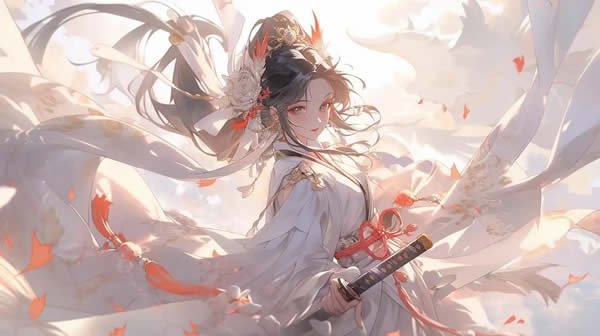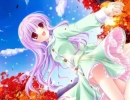旭日东升打一字谜底揭晓与趣味解析
发布时间:2025-09-14 10:21:51 作者:小德 来源:0314游戏网 【 字体:大 中 小 】
旭日东升打一字,这是一个在中国传统文化中广为流传的字谜,它不仅考验着猜谜者的智慧,更蕴含着丰富的文化内涵和语言趣味。字谜作为汉字文化的一种独特表现形式,通过文字的形、音、义等多重维度,激发人们的联想与思考。我们将深入探讨这个经典字谜的谜底及其背后的故事,带您领略汉字之美的同时,也分享一些猜字谜的技巧与乐趣。
让我们直接揭晓谜底:旭日东升打一字的答案是“九”。为什么是“九”呢?这需要从汉字的结构和含义入手进行分析。“旭”字本身由“九”和“日”组成,九”表示数字九,而“日”代表太阳。在谜语中,“旭日东升”常常被解读为太阳(日)从东方升起,而“旭”字中的“九”部分则被隐藏或强调。通过这种拆字法,谜面暗示了“旭”字去掉“日”后剩下的部分,即“九”,从而巧妙地引导猜谜者得出答案。这种基于汉字部首和偏旁的谜语设计,不仅展示了汉字的象形和会意特性,还体现了古人智慧的结晶。
我们不妨拓展一下,探讨字谜在中国文化中的悠久历史。字谜起源于古代,最早可追溯到春秋战国时期,当时称为“隐语”或“廋辞”,常用于宫廷娱乐或文人雅士之间的智力游戏。随着时间的推移,字谜逐渐融入民间,成为节日庆典、家庭聚会中的常见活动。在元宵节猜灯谜的传统中,字谜就占据了重要地位。人们将谜语写在灯笼上,供他人猜测,增添了节日的欢乐氛围。旭日东升打一字正是这类经典谜语的代表,它不仅简单易猜,还能引发人们对汉字起源和演变的思考。

从语言学的角度来看,字谜 like 旭日东升打一字 often rely on puns, homophones, or visual decompositions of characters. For instance, the character "旭" (xù) means "rising sun" or "dawn," and its composition—"九" (jiǔ, meaning nine) and "日" (rì, meaning sun)—allows for a playful interpretation. When the谜面 says "旭日东升," it poetically describes the sun rising in the east, but the key is to focus on the word "旭" itself. By removing the "日" component (as the sun is "rising" or being emphasized), we're left with "九," which becomes the answer. This process not only entertains but also educates, helping people, especially children, learn Chinese characters in a fun way. In modern times, such puzzles are used in educational settings to enhance literacy and cognitive skills.

Moreover, the popularity of this particular谜语 reflects broader cultural themes. In Chinese philosophy, the sun symbolizes vitality, hope, and renewal, often associated with the east where it rises. The number "九" (nine) is considered lucky in Chinese culture, as it sounds similar to the word for "long-lasting" (久, jiǔ), and is often used in idioms and festivals to denote completeness or eternity. Thus, guessing "九" from "旭日东升" not only solves the puzzle but also connects to deeper symbolic meanings, making it a rewarding experience for enthusiasts.

For those new to字谜, here are some tips to improve your guessing skills. First, pay attention to the wording of the谜面; often, it contains clues through homophones or double meanings. In "旭日东升," the phrase is a common idiom for sunrise, but the word "打一字" (da yī zì) indicates it's a character riddle. Second, try breaking down the characters involved—look for radicals or components that might be removed or emphasized. Third, consider cultural context; many字谜 draw from historical events, poetry, or daily life. Practice with similar puzzles, such as "一口咬掉牛尾巴" (which answers to "告") or "三人同日见" (answer: "春"), to build your intuition.
In conclusion,旭日东升打一字 is more than just a simple riddle; it's a gateway to appreciating the richness of the Chinese language and culture. Whether you're a native speaker or a learner, engaging with such puzzles can enhance your linguistic abilities and provide hours of enjoyment. So next time you encounter a字谜, take a moment to unravel its secrets—you might just discover a new facet of汉字之美。猜谜的过程本身就是一种乐趣,就像旭日东升一样,带来光明与启发。
猜你喜欢

道玄宗:探寻古老道教的修行圣地
道玄宗作为重要的道教文化圣地,承载着千年修行智慧与哲学思想。这里不仅是道教信徒朝圣之地,更是研究中国传统文化的重要场所,以其独特的建筑风格、修行方法和文化传承而闻名。
 3356
3356 
黑风山写字 探秘中国书法圣地与艺术传承
探索黑风山写字这一中国书法艺术圣地,了解其悠久的摩崖石刻历史,体验传统书法创作技巧,感受千年文化传承的魅力。从唐代颜真卿到现代书法创新,这里凝聚了中国书法艺术的精髓。
 5167
5167 
海象人 北极圈的神秘守护者与生态平衡的关键角色
探索海象人在北极生态系统中的独特地位,了解他们千年来与自然和谐共处的智慧。从传统狩猎文化到现代环境保护,海象人的生活哲学为应对气候变化提供重要启示。
 6017
6017 
龙希尔探索神秘龙族文化与现代科技的融合
探索龙希尔文化的深厚底蕴与现代应用,了解这一古老智慧如何与科技创新相结合,在建筑设计、人工智能、教育艺术等领域发挥重要作用,实现传统文化与现代社会的完美融合。
 9693
9693 
野见宿祢 日本相扑的传奇始祖与历史文化探秘
探索野见宿祢作为日本相扑始祖的传奇故事,了解相扑运动的历史起源和文化意义。从古代传说考古发现到现代传承,全面解析这位力士对日本传统文化的深远影响。
 3023
3023 
苍天堀探索指南:历史、文化与美食的完美融合
探索大阪苍天堀历史文化街区,了解江户时期建筑特色,体验传统工艺制作,品尝地道关西美食。完整指南包含交通信息、最佳游览时间和摄影建议,助您深度体验日本传统文化魅力。
 4186
4186 
蛮沼村探秘:隐藏在沼泽深处的古老村落与传奇故事
探索神秘蛮沼村的独特魅力,了解这个隐藏在沼泽深处的古老村落。介绍蛮沼村的建筑特色、传统习俗、经济发展现状以及面临的挑战,展现这个传统村落的保护与发展之路。
 8584
8584 
四灵印探秘:揭开古代神秘符印的千年之谜
四灵印是中国古代重要的文化符号,源自星宿崇拜的青龙、白虎、朱雀、玄武四种神兽形象。这些神秘符印在宗教仪式、权力象征和艺术创作中具有独特价值,其发展历程跨越多个朝代,影响遍及东亚各国。
 3224
3224 
花解语的约定:探寻花语背后的秘密与情感
探索花解语约定的深层含义,了解不同文化中花卉象征意义,发现鲜花如何成为跨越时空的情感语言。从历史渊源到现代应用,解读花语在情感表达中的独特价值。
 8016
8016 
黑风山抄经:一场跨越时空的修行之旅
探索黑风山抄经的千年传承,从唐代传说到现代实践,揭示这种独特修行方式的身心效益。了解历史经卷珍品的艺术特色,以及当代修行者如何将传统智慧融入现代生活。
 9654
9654 








